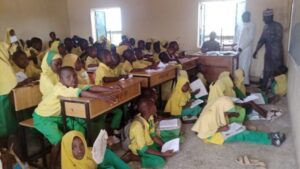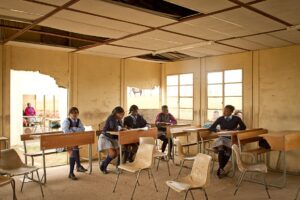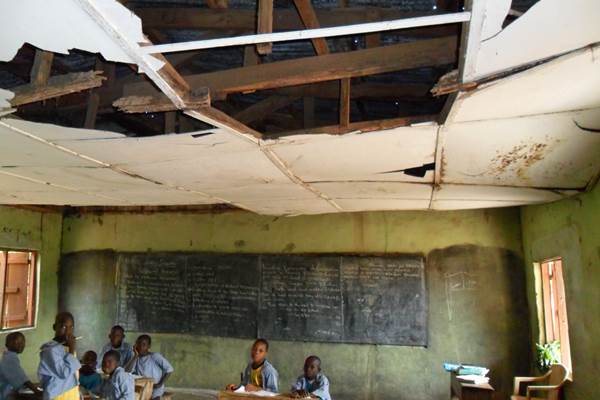In Nigeria’s educational system, teachers are frequently praised as unsung heroes. Tasked with the formidable responsibility of shaping the minds of future generations, their roles are increasingly undermined by inadequate infrastructure.
From dilapidated classrooms to a severe lack of teaching materials, the hurdles Nigerian teachers face are numerous and debilitating. I will analyze the adverse effects of poor school infrastructure on teaching efficacy, and highlight the urgent need for comprehensive improvements to support educators and, by extension, the students they serve.
In many regions, schools are characterized by overcrowded classrooms, insufficient and outdated teaching materials, and poorly maintained facilities. This dire situation not only hampers the learning process for students but also significantly impacts teachers’ ability to perform their duties effectively.
In many Nigerian schools, it is not uncommon to find classrooms designed for 30 students accommodating 70 or more. Such conditions make it nearly impossible for teachers to give individualized attention, conduct interactive sessions, or manage the classroom effectively.
The noise level in overcrowded classes can be overwhelming, reducing the ability to maintain discipline and focus.
For instance, a secondary school in Osun State, where a single teacher handles over 80 students in a room designed for 25, exemplifies this challenge.
The sheer number of students makes it difficult for the teacher to engage with each student, identify their unique learning needs, and provide necessary support. Consequently, this affects the overall quality of education and student performance.

The scarcity of teaching materials is another significant impediment. Many schools lack basic supplies such as textbooks, writing materials, and teaching aids, which are essential for effective teaching and learning.
Teachers often have to improvise with whatever limited resources they can gather, which may not always be effective or appropriate for the curriculum.
In rural areas, the situation is even more dire.
A teacher from a village in Benue State recounts how she has to share a single textbook among 45 students. This not only slows down the pace of teaching but also limits the ability of students to follow along, participate actively, and complete their assignments effectively.
The absence of visual and practical aids further diminishes the quality of education, making it difficult for teachers to illustrate complex concepts or engage students in interactive learning.

Beyond classrooms and materials, the physical state of many school buildings poses a significant challenge. Leaking roofs, broken windows, and insufficient sanitation facilities are common issues that compromise the learning environment.
Teachers working in such conditions face the dual challenge of maintaining their professionalism while coping with an environment that is neither conducive nor safe for learning.
During the rainy season, teachers in certain parts of Nigeria have to halt lessons due to flooding in classrooms. In a secondary school in Anambra State, lessons are often disrupted because of the leaking roof, forcing teachers and students to huddle in dry corners or seek shelter elsewhere.
Such interruptions not only waste valuable teaching time but also demoralize teachers and students alike, contributing to higher absenteeism and lower academic performance.
The continuous struggle with inadequate infrastructure takes a psychological toll on teachers. The frustration of working in substandard conditions can lead to burnout and reduced job satisfaction.
Many educators feel undervalued and unsupported, which negatively affects their motivation and enthusiasm for teaching.
Overcrowded classrooms, lack of teaching materials, and inadequate facilities significantly hinder teachers’ ability to deliver quality education.
To address these challenges, there is an urgent need for comprehensive policy interventions and increased investment in the education sector. Improving school infrastructure will not only enhance teaching efficacy but also ensure that students receive the education they deserve, paving the way for a brighter future for Nigeria.




